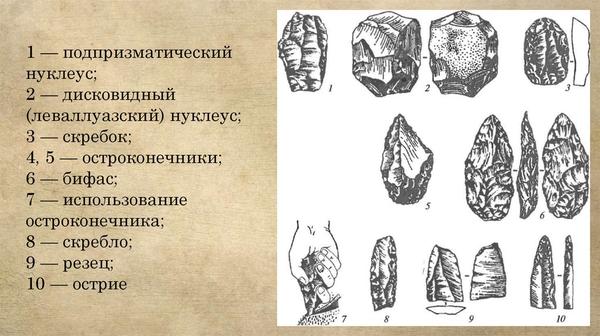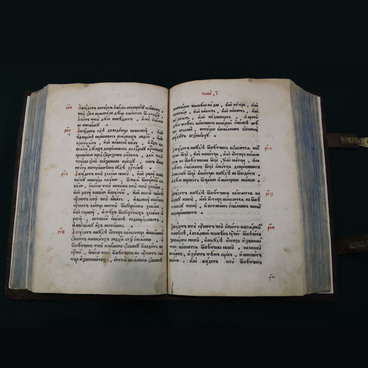The archeologists found a pointed stone tool resembling a spearhead at Khotylevo site — the site of the ancients in Bryansk Region. Fyodor Zavernyayev, one of the first Bryansk archeologist, was in charge of the excavations.
Spear-like sharp-pointed tool
Время создания
Middle Paleolithic, 120 000–100 000 B. C.
Размер
22x6x1,6 cm
22х6х1.6 cm
22х6х1.6 cm
Техника
Flint, two-sided treatment, retouch
Коллекция
Выставка
1
Открыть в приложении#1
Spear-like sharp-pointed tool
#2
#8
The remnants of Paleolithic houses, storage pits and hearths were preserved in Khotylevo. The archeologists found more than 15 thousand flintlock tools and work pieces for them: stone heads for arrows and spears, knives for fells dressing, scrapers and axes. They also found several carved bone figurines depicting pregnant women.
#9
Together with other discoveries, this spear-like sharp-pointed tool arrived at Bryansk Regional Ethnography Museum in 1975. Fyodor Zavernyayev determined the approximate age of this item: from 100 to 120 thousand years. It was made in the times of Middle Paleolithic. This period is also called Mousterian because of the name of the cave Le Moustier in France, where the items of this epoch were discovered for the first time.
#12
Reconstruction of the Cro-Magnon. Source: ru.wikipedia.org
In those times, Cro-Magnon people, the predecessors of modern people lived in the territory of today’s Bryansk region. They lived in dugouts or in stone huts, made clothes of animal skins, could make basic tools and weapons of stone, wood and bones. Cro-Magnons were the first to use coherent speech. They lived in bloodlines, and each person had a specific role: some were hunting, others gathered berries and roots, the third ones guarded the settlement or maintained the fire.
#10
The scientists determined the age of the discovery based on the traces of treatment on its surface: in those days, people polished and sharpened stones bottom-up (in earlier periods they did it vice versa). This sharp-pointed tool circa 23 cm long was carved out of a unitary block of silicon. Then its edges were sharpened using a bone or a wooden tool, and its edges were slightly polished. The scientists usually call such treatment “retouch”. Such sharp-pointed tools were tied to wooden handles with stripes of leather to make their use easier for chopping or cutting.
#11
Fyodor Zavernyayev assumed that this stone piece was used as a spearhead. However, it also could be used for other purposes: the sharp edges easily cut meat, veins and skins, and the sharp point could be used to make holes in wood, bones and soft stones. During hunting, people could use such tools instead of knives.
#13
State Budgetary Cultural Institution Bryansk Regional Ethnography Museum
читать дальшескрыть
00:00
00:00
1x
Spear-like sharp-pointed tool
Время создания
Middle Paleolithic, 120 000–100 000 B. C.
Размер
22x6x1,6 cm
22х6х1.6 cm
22х6х1.6 cm
Техника
Flint, two-sided treatment, retouch
Коллекция
Выставка
1
Открыть в приложении
Поделиться





